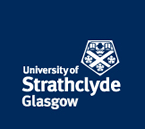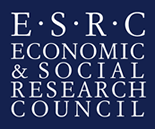Identity, citizenship and belonging
among settled Eastern European migrant
children and young people in the UK

As Europe’s largest ethnic minority, the estimated 12 million Roma (or Romany) people have experienced few benefits from the expansion of democracy in the Eastern states. The wave of anti-Roma sentiment or ‘Romaphobia’ continues, with marches, rallies and violent attacks, along a growing anti-immigration wave. International bodies have reported extensively on the marginalisation suffered by Roma. Across Central and Eastern Europe, they are systematically excluded from education, access to sanitation, employment opportunities and welfare. Although Roma are more than 10% of the total population in some European countries, their number is often under-reported in national Censuses. They literally ‘don’t count’ and experience racism and abuse on a daily basis. The prejudice is so ingrained that in many Eastern European countries children are told they look ‘like a Gypsy’ if they get dirty or warned not to ‘behave like a Gypsy’ if they commit minor offences. In my regular trips to Romania, I often see Roma families thrown out of public buildings, transport, bus and train stations, spat at or threatened on the streets.
The centuries of historic persecution have led Roma families to extreme poverty. As many as 1 in 4 Roma don’t have access to drinking water and sanitation; residential segregation across Europe in Roma shanti settlements at the periphery of towns and villages is the norm. Many families live without access to basic services, due to their insecure accommodation and forced mobility, often brought by legal insecurity or threats from majority groups. Their situation is well-known to policy makers, but rarely a consideration in the distribution of development funds. Living on the margins limits Roma people’s chances of getting involved in mainstream economic, social and political life and leaves them vulnerable to abuse and exploitation. Roma women and children are especially vulnerable, due to low levels of literacy, and traditions of early marriage are often motivated by family poverty.
A lost decade of Roma inclusion 2005-2015?
In 2005, calls from several European bodies for policy measures to end Roma discrimination brought together several governments to commit to the Decade of Roma inclusion. This was unprecedented as, for the first time, countries with substantial Roma populations pledged “to work towards eliminating discrimination and closing the unacceptable gap between Roma and the rest of society”. A commitment was made “to support the full participation and involvement of national Roma communities”, and to identify measure outcomes around education, health, housing, employment and civic participation of Roma through the implementation of Decade Action Plans. While many were hopeful at the time, most are disillusioned now, 10 years later.
The European Commission has been monitoring progress made by the Member States through the EU Framework for National Roma Integration Strategies, encouraging all countries, but mainly the Enlargement Countries to shape strategies to support the integration of Roma. In 2011, the Commission’s report stated that “in spite of some progress achieved both in the Member States and at EU level over the past years, little has changed in the day-to-day situation of most of the Roma”. The Roma Inclusion Index 2015 shows that in many countries Roma infant mortality is about 4 to 6 times higher than for total population. Life expectancy for Roma is also between 12 and 25 years lower. In some countries, as many as 90% of Roma live in segregated neighbourhoods, surviving on between 40% and 75% less income than the total population, with no access to welfare support.
The situation of Roma children has been highlighted by several reports, such as those produced by UNICEF (2007), the Council of Europe (2006), European Commission (2012), and the European Union (2014), to name but a few. Roma children continue to be excluded from mainstream schooling, segregated in special needs schools or not accepted at school because they lack birth certificates or they miss registration days. Teachers’ attitudes towards Roma are also part of the problem- when attending school, Roma children are often seated at the back of the classroom, sent home because they are ‘dirty’ or do not have the materials required. The vast majority suffer bullying and discrimination on a daily basis. With attitudes perpetuated from generation to generation and endemic racism, Roma children remain the lowest achievers in education among all ethnicities across Europe, which means that in some countries, illiteracy among Roma is as high as 90%. Poor experiences of primary schooling put Roma children on a pathway to perpetual marginalisation, with limited opportunities for employment or prospects of secondary or higher education.
Has this been then a lost decade for Roma inclusion? Despite policy initiatives, Roma continue to remain the most excluded ethnic minority in Europe. The anti-Roma sentiment is on the rise and not only across Central and Eastern Europe. The 2015 Global attitudes survey found that 86% of Italians and 60% of French held anti-Roma sentiments, with Romaphobia across Europe at an all-time high. The moral panic driven by a media thirsty for sensationalism and on a constant witch hunt feeds people’s fears. Stories around perpetuated ethnic stereotypes of dirtiness and irresponsible child care, racialized notions of criminality and idleness abound and go unchallenged, as Roma remain “woefully underrepresented” in international organisations, governments and municipal authorities. While the Decade has succeeded to a certain extent to raise awareness about the extreme marginalisation of Roma communities, it has not managed to turn around their situation and most continue to live in extreme poverty and in fear of abuse and persecution. The lack of representation combined with continued exclusion from public services and civil participation have pushed many Roma families into migration to Western Europe, in search of better opportunities. Over the last decade, about 300,000 Roma have migrated to the UK, bringing the total of Romanies in Britain to about 600,000. France, Italy, Spain and Germany have also seen an increase in the number of Roma people arriving in search of employment and better living conditions.
Can Roma integrate after migration?
The question of Roma integration has preoccupied debates in Western Europe. The concept of ‘integration’ is problematic (What would integration look like and what are we asking people to integrate into?). Agency is mainly implied on the part of the newly arrived, with little sense of societal responsibility for creating favourable conditions for integration. Post-migration, Roma people’s longstanding experience of systematic racism puts them at increasing disadvantage, as they often lack the literacy and other skills required by economies in the West, which often translates into precarious work conditions (Sporton, 2013). This makes them vulnerable to continued marginalisation post-migration, with limited access to good quality housing and dependence on informal and sometimes illegal networks of support. Unscrupulous landlords and gang masters prey on their vulnerability and offer services that many Roma depend on post-migration. As they lack the confidence and skills to access statutory provision or knowledge of their rights, newly arrived Roma are often forced into accepting poor living conditions, precarious work and unauthorised or misleading advice from self-appointed brokers.
In Glasgow, the city where I work, about 3,000-4,000 Roma have arrived since 2004 and settled in Govanhill, an ethnically diverse area with a long history of migrant settlement, also one of the poorest. This has led some authors to name the area Glasgow’s Ellis Island (Clark, 2014). Roma families are concentrated in a few streets here, reflecting patterns of settlement in other countries. Sticking together does not only facilitate social and economic networks of support, but provides a sense of safety and community solidarity. A study carried out by Roma Education Fund (2011) with Roma migrant children in the UK found that 85% had previously been in a special school or class in their country of origin. However, only 2-4% of them were assessed as requiring additional support in the UK and most studied in mainstream schools. Last year, we conducted a research project in Govanhill, looking at Roma families engagement with local services, with a focus on education. In this study, we found that parents’ fears of having their children put into a special school was one of the initial barriers schools had to overcome. Other barriers included parents’ reticence to use early years care for fear of discrimination, limited literacy among parents and difficulties in filling out statutory forms or reading school correspondence and low expectations that children will do well academically or that they will be encouraged by schools to strive. When we interviewed parents, it became clear that poverty was a major factor affecting their engagement with schools. On rainy days, absenteeism was high because children did not have shoes or jackets to walk to school. When school trips were on, parents did not send children, because they could not afford the packed lunch and were worried social services will be informed. The ‘rational choice’ decision means that although Roma parents are aware of education as a potential route out of poverty, they also know that limited family resources mean that boys will have to abandon secondary school to work and girls should help out in the home from an early age, to be able to run a household later on.
Despite barriers however, the study revealed many positives in Roma families’ integration in Govanhill. Attitudes to schools were positive. Many parents said they trusted teachers for the first time. Mothers said they have begun to have ‘hope’ for their children’s fair treatment and school success. ‘Trust’ seemed to be a key dimension of parents’ decision to engage. A range of agencies and organisations had come together in Govanhill to look at issues of integration and anti-racism to foster positive local relationships. A local action plan (Glasgow Roma-Net, 2013) has new proposals to take forward, including the employment of mediators from local Roma communities, community activities, such as language classes and children’s groups, and assistance with crisis support and advocacy services. The active community engagement has been led by organisations such as Romano Lav (Roma Voice) and others, promoting initiatives such as street cleaning, Roma marches and local festivals. The Govanhill Law Centre has been a one-stop shop for Roma families denied their rights under the EU law by agencies such as the Department of Work and Pensions, HMRC and local government (Patterson et al., 2011). For example, only 15.7% of Roma pupils in primary schools in Govanhill were in receipt of free schools meals in 2011/2012, although schools were aware that the vast majority of children lived in extreme poverty. This compared to 35.3% of pupils in the general school population in Glasgow and schools often had to help families claim free meals or supplement food in school. School attendance levels were also lower for Roma pupils (81.5% at primary and 57.9% at secondary) than in the general school population (at over 90%). Attendance rates had however improved over years and many schools were aware that Roma parents were increasingly trusting and supportive of their children’s education. As one head teacher put it, ‘We’ve come a long way, but we have a long way to go still’.
Conclusion
Roma people’s position as outsiders remains unchanged across Europe, even with increased freedom of movement. High levels of social and economic exclusion persist among Roma groups post-migration to Western Europe, despite more accessible employment in the West and unrestricted right to work since 2014 for all citizens from the new Accession States. Despite anti-racism campaigns and a decade of Roma inclusion, anti-Roma attitudes are part of an on-going anti-immigration wave across Europe, in an age of increasing austerity. As Roma become the target of right wing groups and political parties across Europe, the high profile cases such as the illegal expulsion of Roma from countries like France and Italy flare moral panics around Roma as a ‘menace’ and a ‘problem’ for Europe. This framing moves the general public away from empathy and reflection on Roma people’s position as victims of inequality and outsiders and leads to the perpetuation of entrenched inequalities and discriminatory attitudes likely to remain unchanged for at least another decade.
References
Clark, C. (2014) Glasgow’s Ellis Island? The integration and stigmatisation of Govanhill’s Roma population, People, Place and Policy, 8(1), 34-50.
Glasgow Roma-NeT (2013) Local Action Plan 2012-2013. Glasgow: Glasgow City Council.
Paterson, L., Simpson, L., Barrie, L. and Perinova, J. (2011) Unequal and Unlawful Treatment. Barriers Faced by the Roma Community in Govanhill when Accessing Benefit and the Implications of Section 149 of the Equality Act 2010. Glasgow: Oxfam and Govanhill Law Centre.
Sporton, D. (2013) ‘They Control My Life’: the Role of Local Recruitment Agencies in East.
Acknowledgement: This blog has first appeared on www.discoversociety.org on 1st Dec 2015
Save
Save
Save
Recent Posts-
| Young Eastern Europeans Are Reporting Increased Racism And Xenophobia After The Brexit Vote (16/06/2018, Daniela Sime) |
| Supporting young EU migrants in Brexit Britain (10/11/2017, Naomi Tyrrell) |
| Saturday and back to school? Eastern European complementary schools in the UK (15/09/2016, Claire Kelly) |
| Eternal outsiders: Migrant Roma children in Europe (20/08/2016, Daniela Sime) |
| The health of Eastern European young people in the UK (17/08/2016, Daniela Sime) |
| The refugee crisis: Debunking the myths (15/08/2016, Daniela Sime) |


